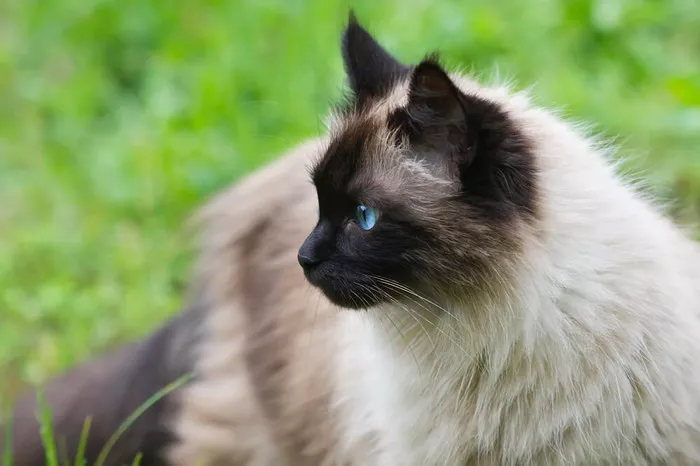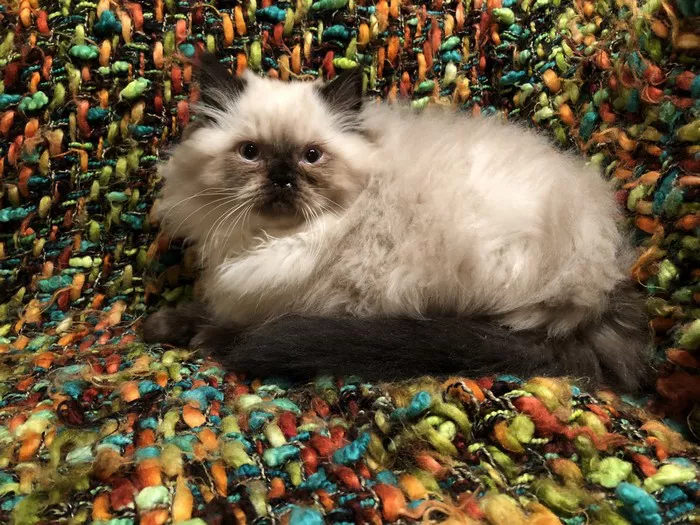Himalayan cats, with their striking blue eyes, luxurious fur, and affectionate demeanor, have captured the hearts of cat lovers around the world. Often described as a blend of the Persian and Siamese breeds, Himalayans are known for their calm and gentle temperament. However, there is much debate surrounding their vocal tendencies. Are Himalayan cats truly talkative, or is this merely a misconception? In this article, we delve into the vocal nature of Himalayan cats to uncover the truth behind their communication habits.
Himalayan Cats
Himalayan cats, also referred to as “Himmies” or “Colorpoint Persians,” are a breed known for their stunning appearance and laid-back personality. Originating from a crossbreeding between Persian and Siamese cats, Himalayans boast a striking coat pattern characterized by colorpoints on their ears, face, paws, and tail, similar to that of a Siamese cat. Their long, flowing fur requires regular grooming to prevent matting and tangles.
Personality Traits of Himalayan Cats
Himalayan cats are renowned for their calm, gentle, and affectionate nature. They are often described as being sweet-tempered, docile, and well-mannered, making them ideal companions for families, singles, and seniors alike. Himalayans tend to be social and enjoy spending time with their human companions, whether it’s lounging on the couch, cuddling in bed, or simply sitting by your side as you go about your day.
The Myth of Himalayan Cats’ Talkativeness
One common misconception about Himalayan cats is that they are exceptionally talkative compared to other breeds. This belief likely stems from their Siamese ancestry, as Siamese cats are renowned for their vocal and chatty nature. However, while Himalayans may occasionally vocalize to communicate their needs or desires, they are typically not as talkative as purebred Siamese cats.
Factors Influencing Vocalization in Cats
Like all cats, Himalayans communicate using a variety of vocalizations, body language, and behaviors. The frequency and intensity of a cat’s vocalizations can be influenced by several factors, including:
Breed: Different cat breeds have distinct vocal tendencies influenced by their genetic heritage. While Siamese cats are known for their chattiness, breeds such as Persians tend to be quieter and more reserved.
Individual Personality: Each cat has its own unique personality, which can influence its communication style. Some cats are naturally more vocal and outgoing, while others are quieter and more reserved.
Environmental Stimuli: Cats may vocalize in response to various environmental stimuli, such as hunger, boredom, stress, or excitement. Changes in routine, new experiences, or the presence of other animals or people in the home can also trigger vocalization.
Socialization and Bonding: Cats may vocalize as a means of seeking attention, expressing affection, or establishing social bonds with their human companions. Vocalization can serve as a form of communication between cats and their owners, reinforcing the bond between them.
Health and Well-being: Changes in a cat’s vocalization patterns can sometimes indicate underlying health issues or discomfort. Cats may vocalize more frequently or loudly when they are in pain, feeling unwell, or experiencing anxiety or distress.
Understanding Himalayan Cats’ Vocal Behaviors
While Himalayan cats may not be as talkative as purebred Siamese cats, they are still capable of vocalizing to communicate with their owners. Some common vocalizations exhibited by Himalayans include:
Meowing: Himalayans may meow to greet their owners, ask for food or attention, or express their displeasure or discomfort.
Purring: Purring is a common vocalization in cats and is typically associated with contentment, relaxation, or seeking attention. Himalayans may purr while being petted, cuddled, or when they are feeling comfortable and secure.
Chirping or Trilling: Some Himalayans may emit chirping or trilling sounds, particularly when they are excited or anticipating something, such as mealtime or playtime.
Yowling: Yowling is a louder and more intense vocalization that cats may use to communicate distress, anxiety, or territorial behavior. Himalayans may yowl if they are in pain, feeling threatened, or experiencing reproductive instincts.
Tips for Communicating with Your Himalayan Cat
While Himalayan cats may not be as vocal as some other breeds, they still rely on communication to express their needs and emotions. Here are some tips for understanding and communicating with your Himalayan cat:
Pay Attention to Body Language: Cats communicate not only through vocalizations but also through body language, facial expressions, and behaviors. Pay attention to your cat’s posture, tail position, ear movements, and facial expressions to understand how they are feeling.
Establish Routines: Establishing consistent routines for feeding, playtime, grooming, and social interaction can help reduce stress and anxiety in your Himalayan cat and promote a sense of security and predictability.
Provide Enrichment: Keep your Himalayan cat mentally and physically stimulated by providing toys, scratching posts, climbing structures, and opportunities for interactive play. Engaging in regular play sessions can help prevent boredom and satisfy your cat’s natural instincts.
Be Responsive: Respond promptly to your cat’s vocalizations and cues, such as meowing for attention or chirping for play. Offering reassurance, affection, or fulfilling their needs promptly can strengthen the bond between you and your Himalayan cat.
Respect Their Space: While Himalayan cats enjoy companionship, they also appreciate having their own space to retreat and relax. Provide your cat with quiet, cozy spots where they can rest undisturbed and feel safe and secure.
Conclusion
In conclusion, while Himalayan cats may not be as talkative as purebred Siamese cats, they are still capable of vocalizing to communicate with their owners. Understanding the factors influencing a cat’s vocalization patterns and being attentive to their body language and behaviors can help strengthen the bond between you and your Himalayan cat. Whether they’re purring contentedly in your lap or letting out an occasional meow to say hello, Himalayans have a unique way of expressing themselves that endears them to cat lovers everywhere.























